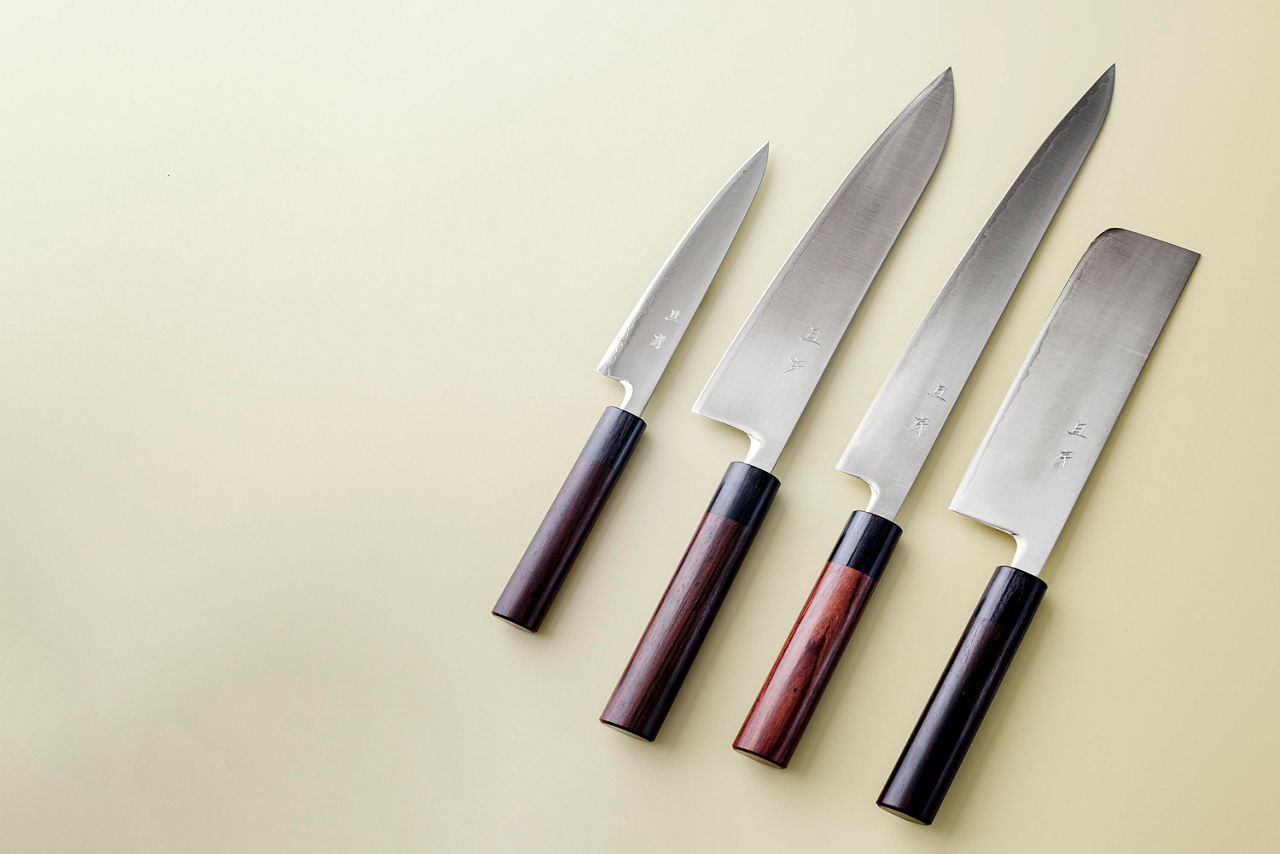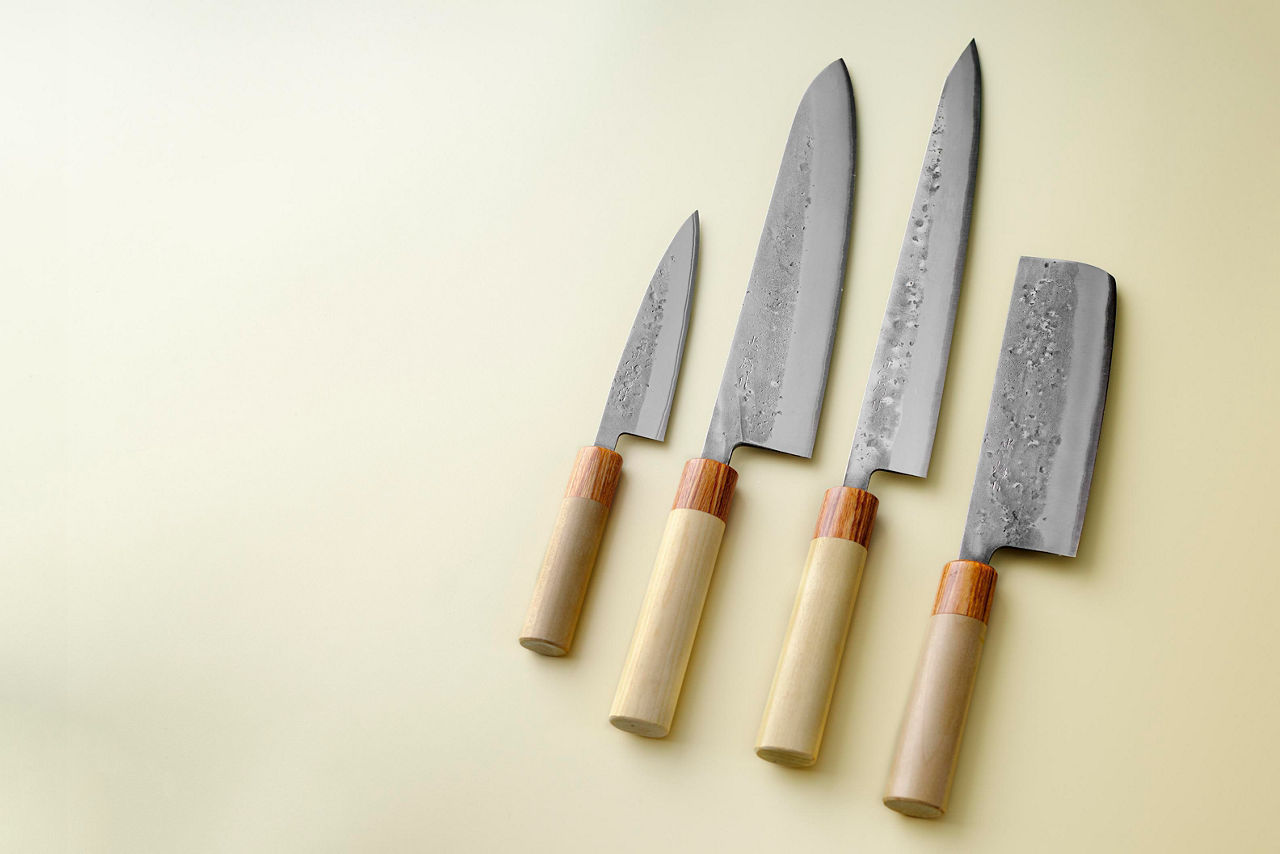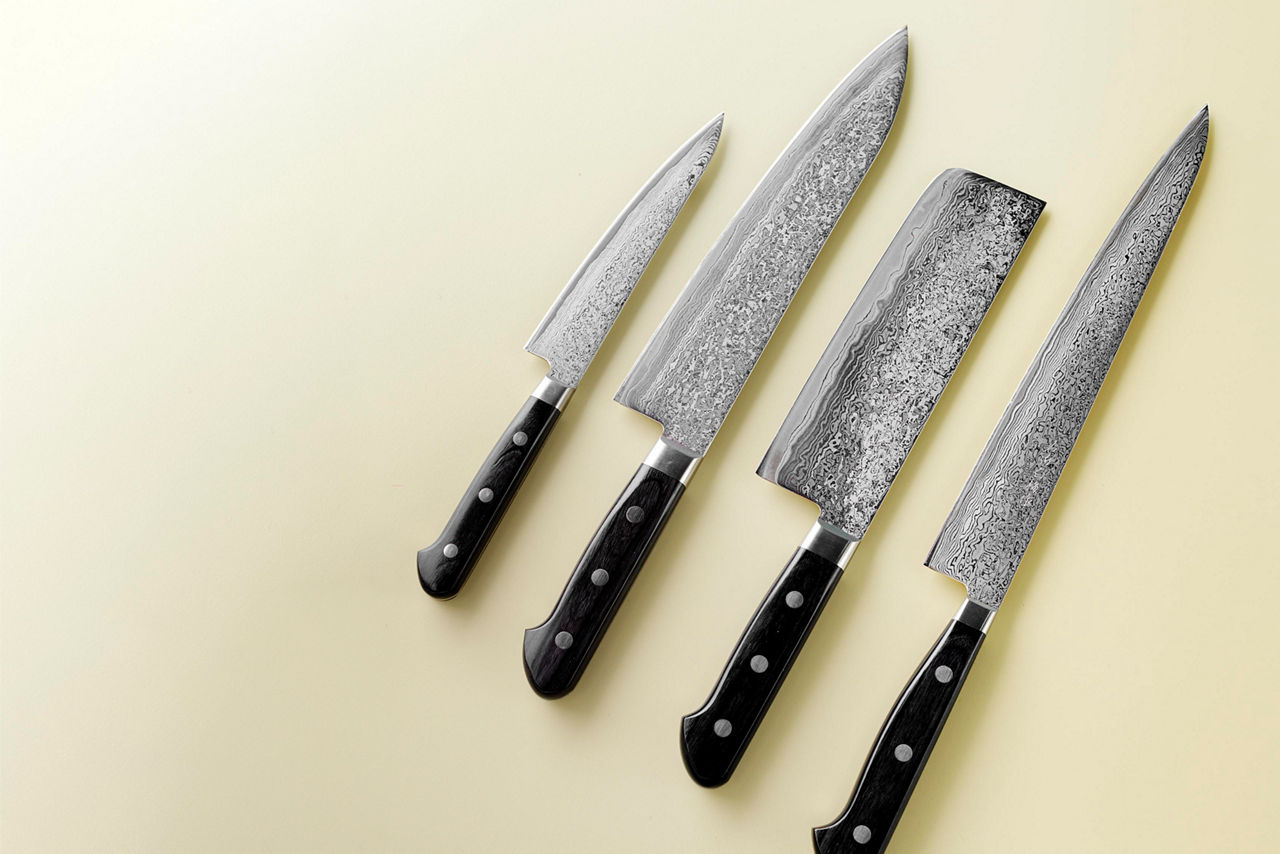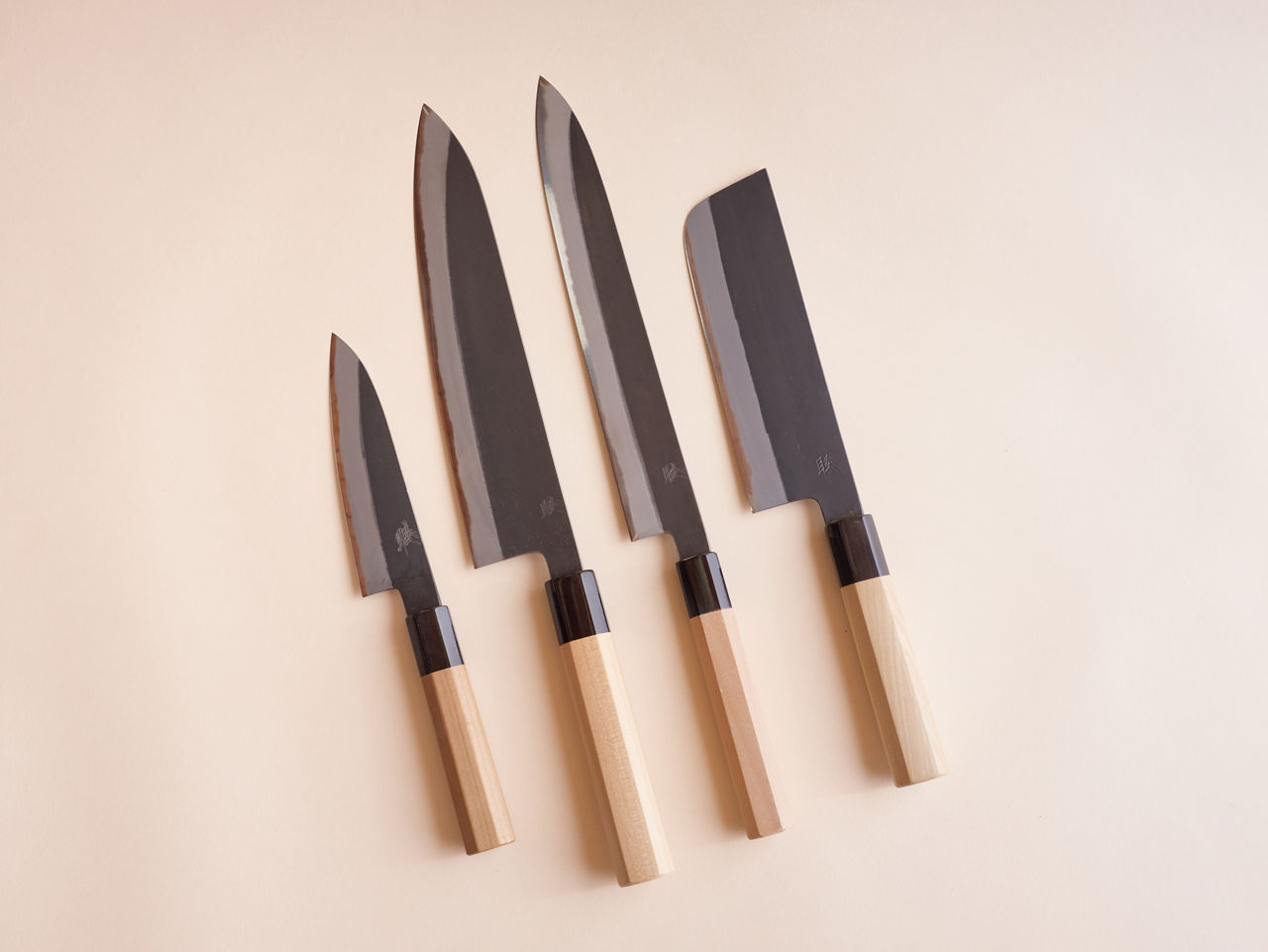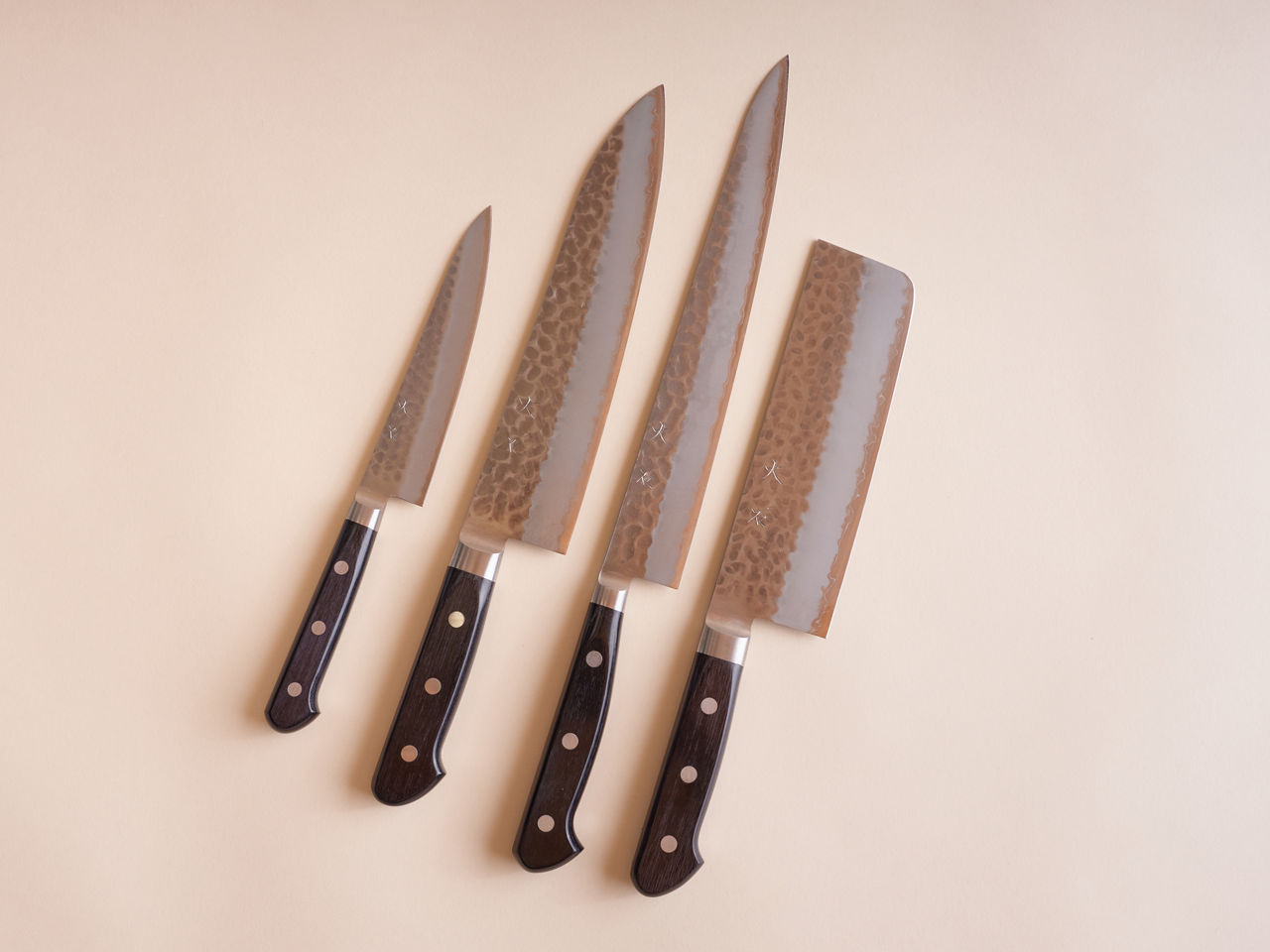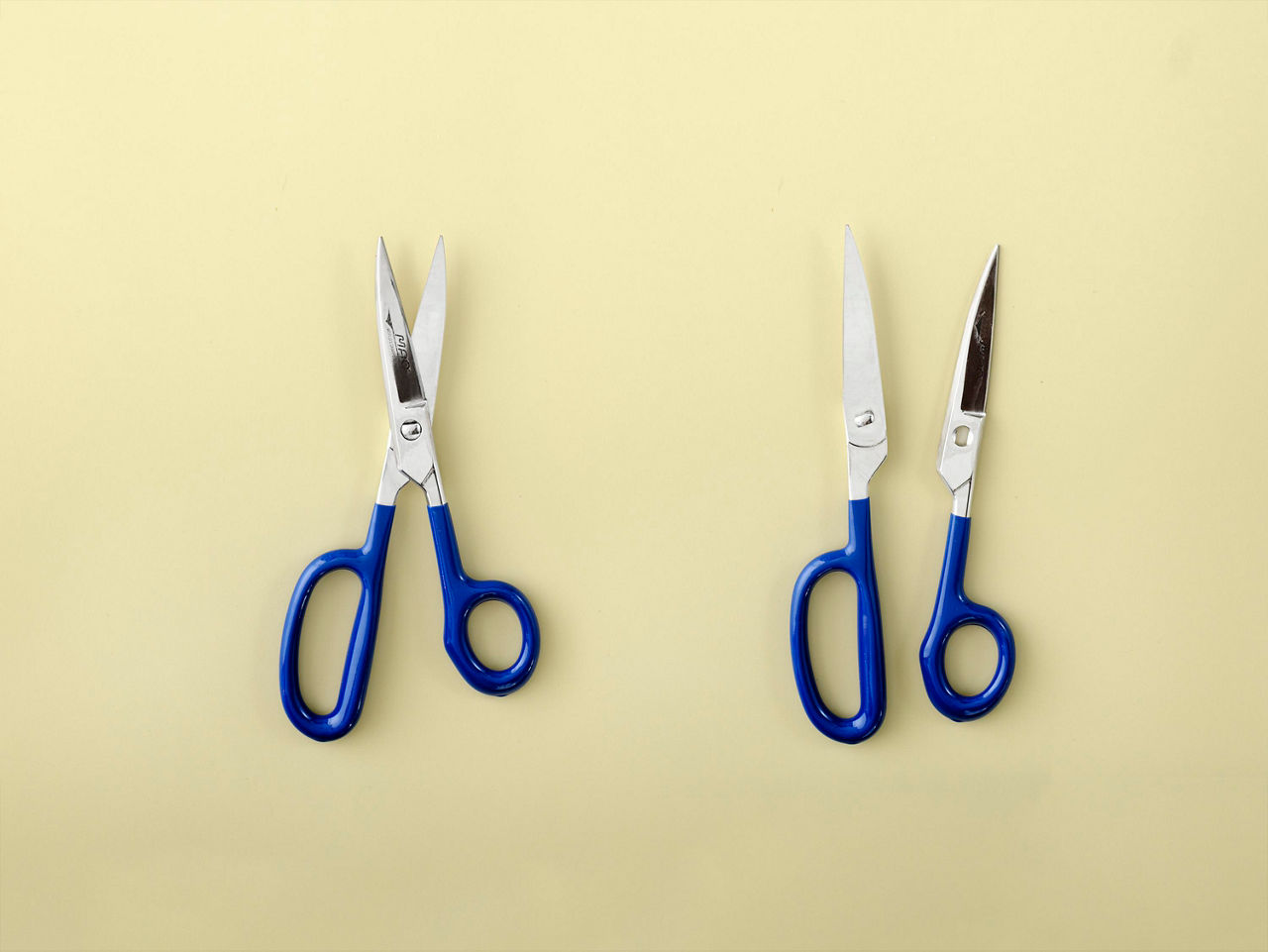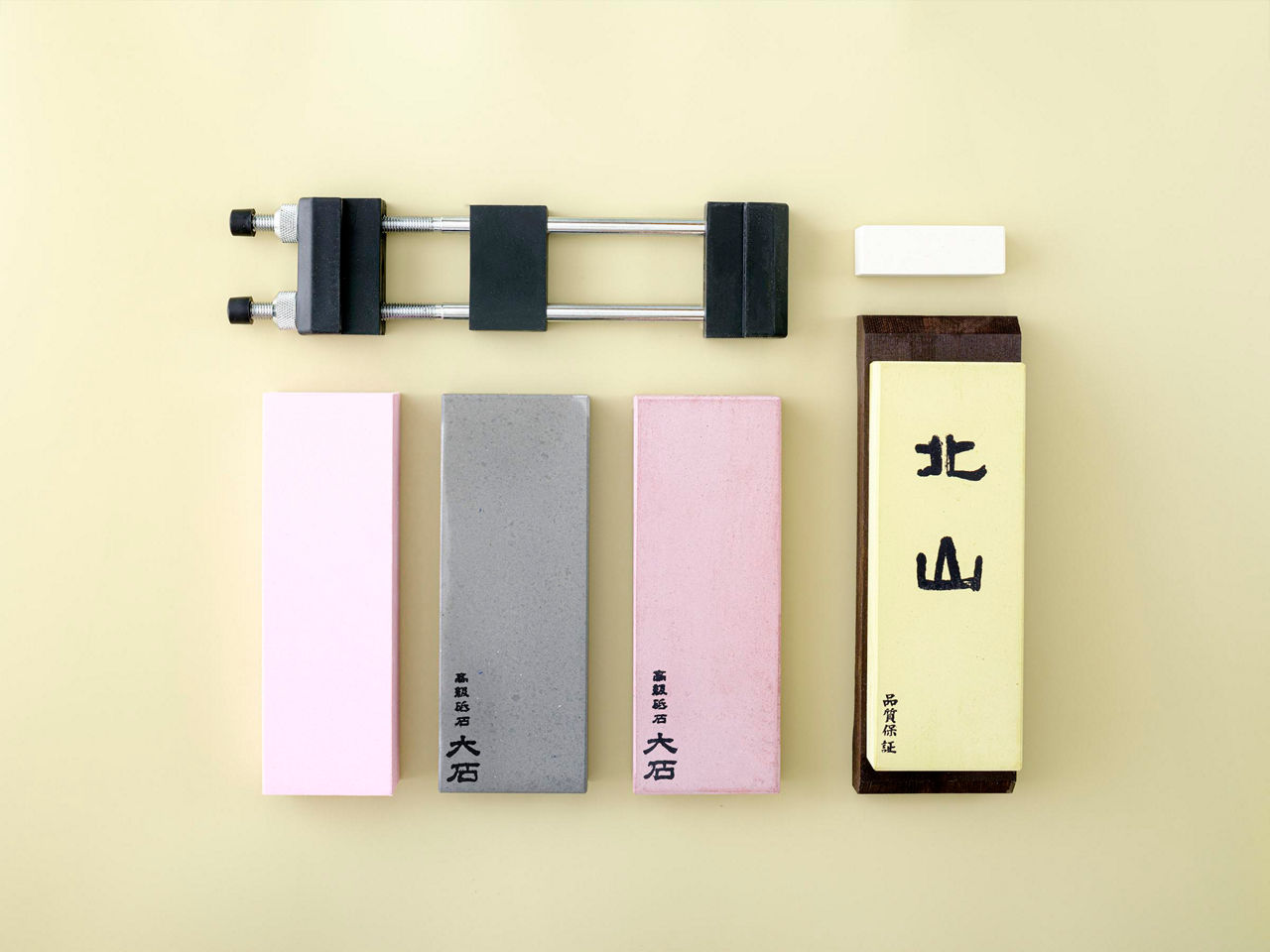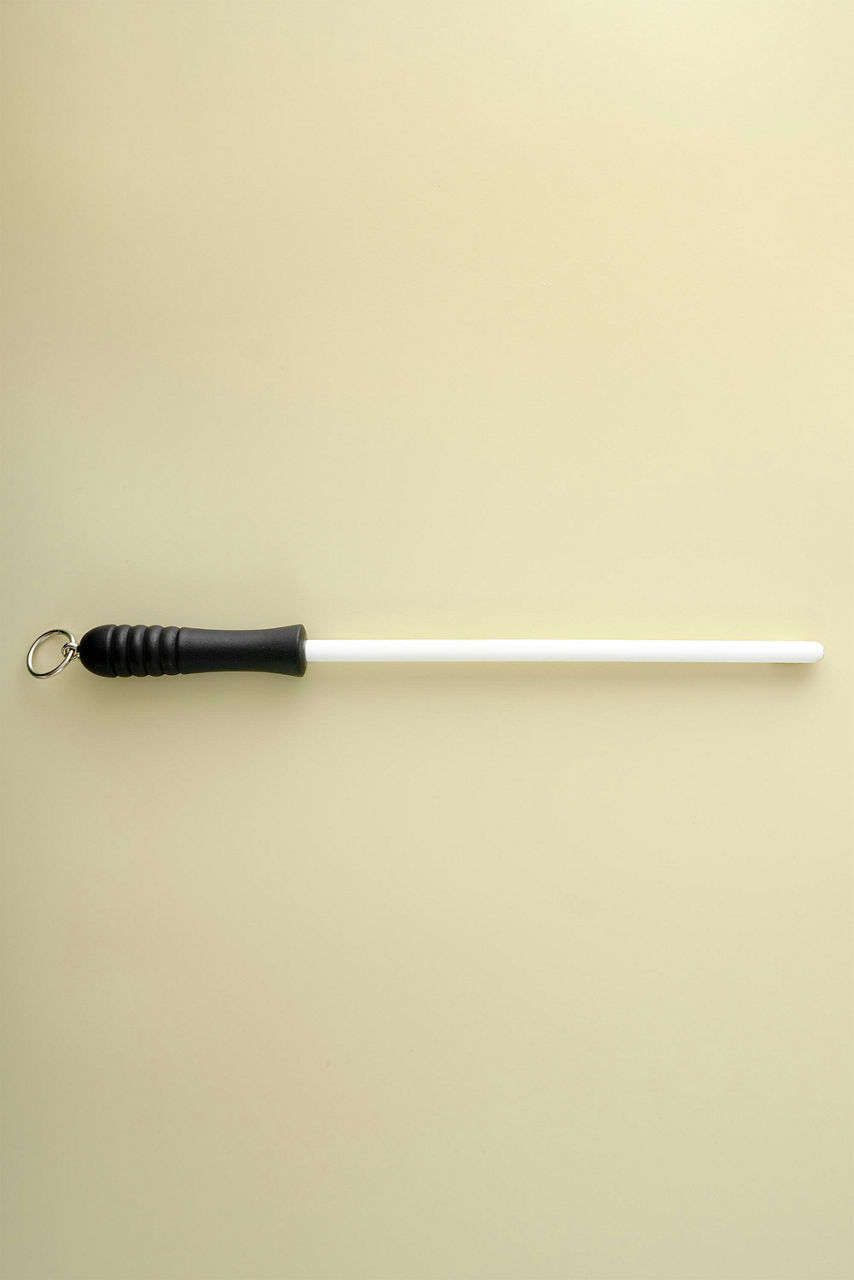We’ve partnered with blade sage Daniel O’Malley—owner of the epic knife emporium the Epicurean Edge—to bring you this curated selection of handcrafted Japanese knives.
O’Malley is a tried-and-true expert on selecting and maintaining the world’s best chopping-and-slicing tools. At Epicurean Edge, O’Malley sells hand-crafted tools from the best bladesmiths in the world, teaches classes on sharpening, and also sharpens and shapes his customers’ collections.
Knives are, without a doubt, our most important tools in the kitchen. If you want them to last a lifetime, you need to treat them right. Check out the knife sharpening class to learn how—through video demos and clever tips and tricks, O’Malley walks us through the theory and technique of sharpening knives using Japanese waterstones, those badass little blocks that master bladesmiths have used for hundreds of years.
Types of Knives
We are featuring these four essential kinds of Japanese knives.
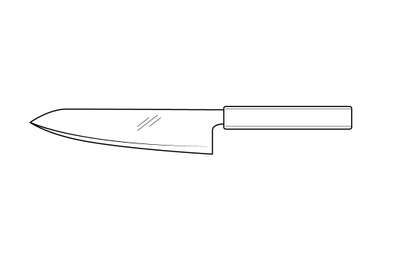
Modeled after the French pattern chef’s knife, Gyutos are long and slim. The elongated blade makes this an ideal knife for creating the sawing motion necessary for cleanly cut meat, and it’s specially crafted to allow plenty of finger clearance—particularly helpful when you’re working over a cutting board.
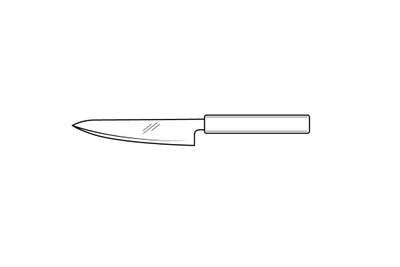
Utility knives are excellent for tasks that require delicate slicing and a lot of dexterity. This workhorse will always come in handy when you need to slice up meats, vegetables, and fruit.
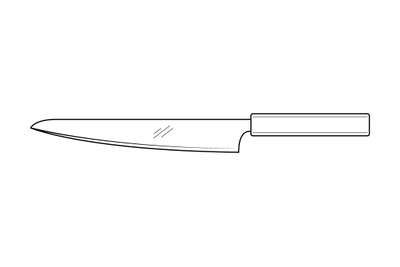
It takes a very precise knife to create perfect sushi and sashimi. With a thin, long blade that ensures a remarkably clean cut, these extremely sharp carving knives are well suited for slicing and portioning meats and fish.
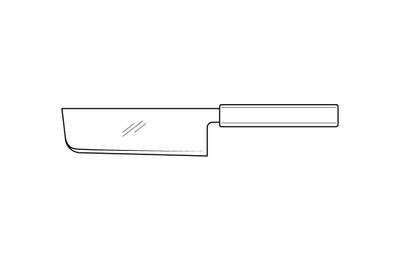
The nakiri usuba is a traditional Japanese knife shape ideal for chopping fruit and vegetables. The edge is double beveled, like a Western knife. Though sometimes called a vegetable cleaver, the thin edge geometry makes it a precision tool, rather than a Japanese equivalent to meat cleavers.
